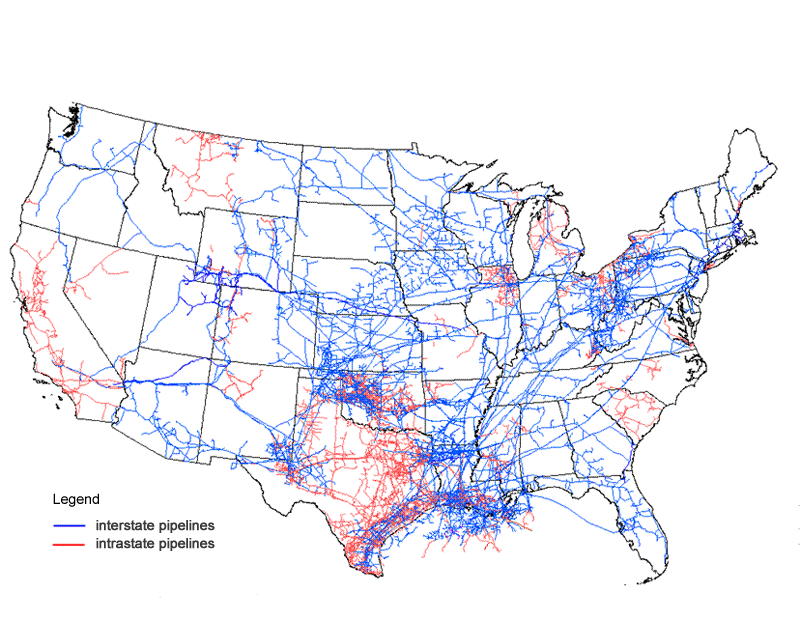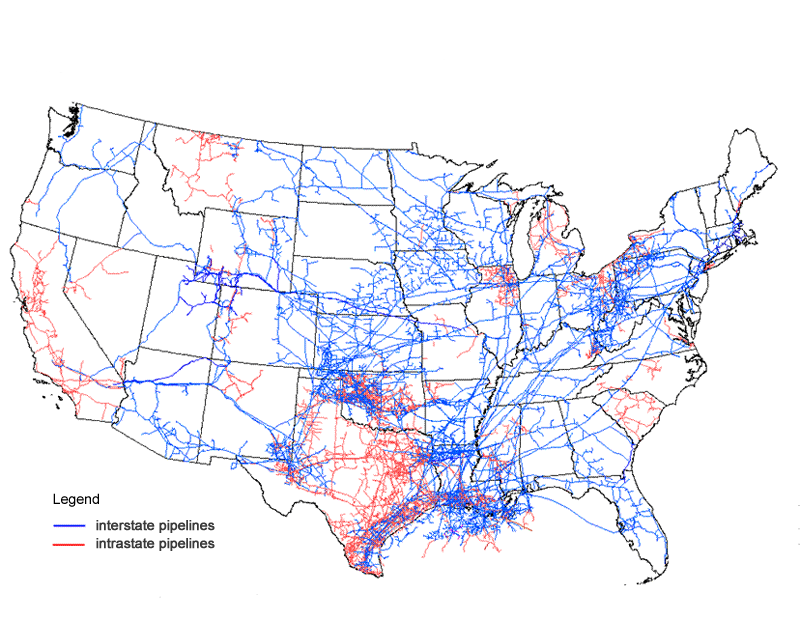Safely Transporting Green Hydrogen
Humanity consumes approximately 100 million tons of hydrogen each year. The overwhelming majority of this hydrogen is used in various industrial processes, such as the production of ammonia. And we’re poised to use even more, as hydrogen can power engines and other machines without producing greenhouse gases. Still, for any large-scale transition to a clean fuel source, the fuel itself needs to be easily and economically stored and transported. Researchers at Los Alamos National Laboratory in New Mexico now analyze how to safely transport hydrogen in existing pipeline infrastructure [1]. Their study indicates possibilities to overcome challenges associated with introducing hydrogen gas into systems designed for natural gas transport (Fig. 1). The results show in particular that a hydrogen–natural gas mixture can be managed so as to avoid unwanted pressure spikes.
Hydrogen can power combustion engines and turbines. It has already been used as a rocket fuel, for example, in the space shuttle, and it can be turned into an aviation fuel. Fuel cell stacks powered by hydrogen are beginning to enter the marketplace as well. They promise longer-range and quicker refueling than battery-electric vehicles, albeit at a lower overall cycle efficiency. Hydrogen can even be used to turn sequestered carbon into syngas, a replacement for methane pumped from the ground.
Currently, more than 95% of the hydrogen gas that we use is generated from fossil fuels via chemical reactions. Almost the entire remainder is generated by electrolysis of water. Using renewable power sources such as wind and solar to drive that electrolysis instantaneously provides “green hydrogen.” Using excess renewable energy this way is preferable to storing the excess energy in grid-scale batteries, which require nonsustainable materials and are not yet cost effective in high-volume deployment. Hydrogen from electrolysis thus could act as the perfect storage device to bridge the intermittency of wind and solar. This concept is the basic idea behind the green hydrogen economy, an essential component of any plan for limiting global warming.
That leaves open the question of how to store and transport hydrogen in the most cost-effective way. For any gas transport, a pipeline is required. But constructing an entirely new pipeline network seems prohibitively expensive. An attractive alternative is to utilize the existing natural gas pipeline network. In the US alone, roughly 5 million km of pipelines deliver approximately 3 · 1010 m3 of natural gas to consumers per year [2]. The natural gas pipeline network is thus the largest man-made energy-storage device in the country (Fig. 2).
Mixing hydrogen with natural gas provides a possibility for extending the purpose of these pipeline networks. But transporting heterogeneous gas mixtures of varying concentrations needs to be studied carefully to guarantee pipeline safety. While many proposals have been made to add hydrogen into pipelines that transport natural gas, such modifications will change the flow dynamics and energy content of the pipelines. As such, questions remain about how existing pipeline networks will perform with heterogeneous mixtures of hydrogen and natural gas. Luke Baker and the rest of the Los Alamos team have developed a new mathematical and computational framework to address this problem. [1].
A mixture of two gases has very different properties to either of the original gases. The molar mass and thermodynamic relations, for example, change when the gases are mixed. As a result, the equations describing the mass and energy transport dynamics of an inhomogeneous mixture of gases are far more complex than for a homogeneous gas. Some models predict that natural gas pipelines can safely transport mixtures up to some fraction of the natural gas [3, 4]. Others describe what might happen if precautions aren’t taken [5, 6]. Problems include pipeline pressures exceeding allowable limits and leak discharges increasing in number. These and other studies tend to address the sensitivity of a specific network rather than providing a model that adequately describes the physics of how the gas moves in the pipelines. Such a general model could help manage design, operational, and economic issues.
Filling that gap, the Los Alamos researchers examine the changes in nonlinear dynamics of network flows that arise with inhomogeneous mixing. They formulate a system of partial differential equations that govern the flow dynamics of gas mixtures in a system that encompasses the pipes, valves, compressors, and other components that make up an industrial pipeline spanning hundreds of kilometers. Their model applies to general gas networks, where arbitrary gas mixtures can be injected or withdrawn at arbitrarily specified nodes.
The model shows what happens when a parameter is varied, such as a valve being opened. The team finds that the response of the network can be monotonic, periodic, or chaotic depending on the boundary conditions. In general, flows close to the laminar limit (that is, monotonic or periodic) provide fewer challenges for the structural integrity of the pipeline network. By contrast, chaotic (turbulent) flows add additional stress, which can weaken the pipeline over time. The team’s simulations indicate the chaotic behavior is transient.
Importantly, the researchers find that hydrogen may be safely blended into natural gas pipelines as long as the temporal variations of the injection rate are small enough to prevent large, rapid changes in pressure. That conclusion is reassuring, but the study omits some of the engineering details included in some previous network-specific studies. To confirm the model, the researchers will need to run experiments in a test facility to see if the responses in the model match those in actual pipes carrying gas mixtures.
This study is not the definitive answer to questions about the feasibility of transporting hydrogen in natural gas pipelines. Still, it clearly defines the parameter space that must be studied in an experimental multinode-pipeline network test facility. Once this future experimental work is complete, it could pave the way for attempting heterogeneous transport of hydrogen on an industrial scale.
References
- L. S. Baker et al., “Transitions from monotonicity to chaos in gas mixture dynamics in pipeline networks,” PRX Energy 2, 033008 (2023).
- US Energy Information Administration, “Natural gas explained,” 2022. https://www.eia.gov/energyexplained/natural-gas/natural-gas-pipelines.php.
- M. Götz et al., “Renewable power-to-gas: A technological and economic review,” Renewable Energy 85, 1371 (2016).
- M. Ozturk and I. Dincer, “A comprehensive review on power-to-gas with hydrogen options for cleaner applications,” Int. J. Hydrogen Energy 46, 31511 (2021).
- Z. Hafsi et al., “A computational modelling of natural gas flow in looped network: Effect of upstream hydrogen injection on the structural integrity of gas pipelines,” J. Nat. Gas Sci. Eng. 64, 107 (2019).
- N. Subani et al., “Leak detection of non-isothermal transient flow of hydrogen-natural gas mixture,” J. Loss Prev. Process Ind. 48, 244 (2017).







